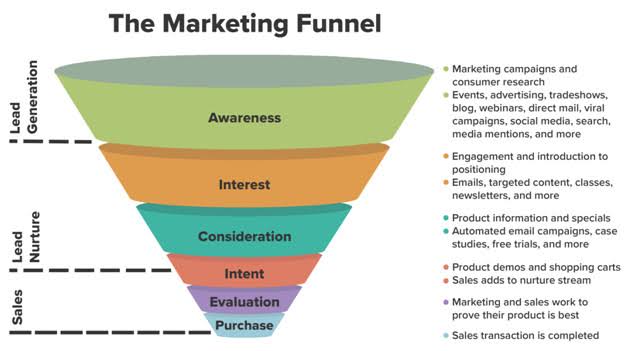Startup success is often attributed to several factors, and one crucial element that significantly impacts their growth and visibility is effective marketing. In startup marketing case studies, the competitive business landscape, startups face numerous challenges when it comes to gaining market share and capturing the attention of their target audience.
In this article, we will delve into some compelling case studies of startups that have implemented innovative and successful marketing strategies, showcasing how they achieved remarkable growth and recognition.
Dollar Shave Club: Dollar Shave Club disrupted the traditional razor industry by offering affordable, high-quality shaving products through a subscription-based model.
Their marketing strategy centered around a humorous and viral video titled “Our Blades Are F***ing Great.” The video went viral, generating millions of views and catapulting the company into the spotlight.
This clever approach not only conveyed their value proposition effectively but also created a strong emotional connection with viewers. Dollar Shave Club’s marketing campaign helped them acquire over 12,000 new customers within the first 48 hours of its release, ultimately leading to a successful acquisition by Unilever for $1 billion.
Key Takeaway: Creativity and humor, combined with a clear value proposition, can make a profound impact on a startup’s marketing success.
Airbnb: Airbnb transformed the hospitality industry by allowing homeowners to rent out their properties to travelers. To overcome the initial trust and credibility challenges, Airbnb implemented an ingenious marketing tactic known as “Craigslist Integration.” By automatically cross-posting rental listings from Airbnb to Craigslist, they were able to tap into Craigslist’s massive user base.
This strategy not only provided a vast reach for Airbnb but also helped build trust among potential users who were already familiar with Craigslist. This early growth hack played a crucial role in Airbnb’s journey to becoming a global travel phenomenon.
Key Takeaway: Leveraging existing platforms and partnerships can be a game-changer for startups looking to expand their user base quickly.
Slack: Slack, a team collaboration tool, experienced rapid growth by capitalizing on the power of word-of-mouth marketing. They implemented a unique referral program that rewarded both the referrer and the referred users with $100 in credit.
This incentivized existing users to spread the word about Slack, resulting in exponential growth. Additionally, Slack focused on building integrations with popular third-party applications, making it an indispensable tool for businesses.
By positioning itself as a central hub for productivity, Slack effectively demonstrated its value and became the go-to choice for teams worldwide.
Key Takeaway: Building a robust referral program and creating strategic partnerships can significantly boost a startup’s user acquisition and retention.
Casper: Casper disrupted the mattress industry by offering a convenient and affordable way to purchase mattresses online. To address the challenges of selling a product that people traditionally preferred to try in-store, Casper introduced a 100-night risk-free trial. This gave customers the confidence to purchase a mattress online, knowing they could return it if unsatisfied.
Furthermore, Casper focused on content marketing by launching a dedicated sleep-focused online publication called “Van Winkle’s.” This initiative positioned Casper as a thought leader in the sleep industry, fostering trust and credibility among their target audience.
Key Takeaway: Mitigating purchase concerns through risk-free trials and establishing thought leadership through content marketing can help startups overcome industry-specific challenges.
The success stories of Dollar Shave Club, Airbnb, Slack, and Casper provide valuable insights into the world of startup marketing. By embracing creativity, leveraging partnerships, implementing referral programs, and addressing industry-specific challenges, these startups were able to carve a niche for themselves and achieve exceptional growth.
As the startup ecosystem continues to evolve, these case studies serve as inspiration for aspiring entrepreneurs, highlighting the importance of strategic marketing in driving their ventures towards success.
Read Also: Unleashing the Power of Fintech Startup Marketing
Case studies on startup marketing failures

Launching a startup can be an exhilarating experience, filled with hope, passion, and the anticipation of success. However, the reality is that many startups fail, and often, one of the critical areas where they stumble is in marketing their products or services effectively. In this article, we will delve into several case studies of startup marketing failures, highlighting the key lessons to be learned from these experiences.
Case Study 1: Juicero’s Overpriced Juice Press: Juicero, a Silicon Valley startup, gained significant attention and funding for its high-tech juice press. However, the company’s downfall came when it was revealed that the $400 juicer essentially squeezed pre-packaged juice packets that could be manually squeezed by hand.
The product’s high price point, combined with the revelation that the juicer itself wasn’t necessary, led to a loss of trust and credibility among consumers. Juicero’s failure serves as a reminder that startups must deliver genuine value to customers and avoid overhyping products that fail to deliver on their promises.
Key Lesson: Don’t overengineer or oversell your product if it doesn’t provide a substantial benefit over existing alternatives.
Case Study 2: Quibi’s Misalignment with Consumer Preferences: Quibi, a short-form mobile video streaming platform, raised $1.75 billion in funding but struggled to gain traction with its target audience.
The startup assumed that consumers would be willing to pay for premium short-form content, optimized for mobile viewing. However, Quibi failed to recognize that users were already satisfied with free or low-cost alternatives like YouTube and TikTok.
Additionally, the platform launched during the COVID-19 pandemic, when people were seeking longer content to consume during lockdowns. Consequently, Quibi shut down just seven months after its launch. This case emphasizes the importance of understanding consumer behavior, preferences, and market conditions before launching a startup.
Key Lesson: Conduct thorough market research to ensure your product aligns with existing consumer preferences and market trends.
Case Study 3: Brandless’ Lack of Differentiation: Brandless entered the market with the concept of offering quality everyday products at affordable prices. However, the company failed to establish a clear brand identity and differentiation. Consumers were left confused about what made Brandless unique, as other established brands offered similar products at competitive prices.
The lack of a compelling value proposition and failure to stand out in a crowded market led to Brandless’ demise. This case highlights the importance of crafting a strong brand identity and communicating a clear value proposition to attract and retain customers.
Key Lesson: Define your unique selling proposition and ensure your brand stands out in a competitive market.
Case Study 4: Yik Yak’s Failure to Manage Community Behavior: Yik Yak, a location-based social networking app, gained popularity on college campuses for its anonymous messaging feature. However, the app’s user base quickly spiraled into a toxic environment, with cyberbullying and harassment becoming prevalent.
Yik Yak failed to implement effective measures to manage user behavior, leading to negative publicity and its eventual decline. This case emphasizes the significance of building a safe and positive community around your product or service and proactively addressing any potential issues that may arise.
Key Lesson: Prioritize community management and foster a safe and inclusive environment for your users.
While startup marketing failures can be disheartening, they provide valuable lessons for aspiring entrepreneurs. The case studies discussed here highlight the importance of delivering genuine value, understanding consumer preferences, establishing a strong brand identity, and managing community behavior.
Bylearning from these mistakes, entrepreneurs can avoid similar pitfalls and increase their chances of success in the competitive startup landscape. Remember, failure is not the end—it’s an opportunity to grow, adapt, and ultimately thrive in the dynamic world of startups. By studying these cases and understanding the underlying lessons, entrepreneurs can make more informed decisions and build stronger marketing strategies.
Read Also: A Guide to Tax Preparation Classes
Case Studies on Successful Startup Growth

Starting a business is no easy feat, and achieving sustainable growth is an even greater challenge. However, amidst the competitive landscape, some startups have managed to rise above the rest and experience remarkable success.
Airbnb: Revolutionizing the Hospitality Industry: Airbnb, founded in 2008, disrupted the hospitality industry by connecting travelers with unique and affordable accommodations. Through a platform that allowed homeowners to rent out their spaces, Airbnb created a global marketplace that offered an alternative to traditional hotels.
The key to their success lay in addressing the pain points of both hosts and guests, providing a win-win solution. By leveraging the power of user-generated content, user reviews, and a robust referral program, Airbnb grew rapidly, reaching over 100 million bookings within a decade.
Lessons Learned
Identify a problem in the market and provide a unique solution.
Focus on building a strong community and facilitating trust among users.
Leverage user-generated content and social proof to drive growth.
Implement a referral program to encourage organic user acquisition.
Slack: Transforming Communication in the Workplace: Slack, founded in 2013, set out to revolutionize workplace communication by offering a user-friendly and intuitive platform. By streamlining team collaboration and reducing email clutter, Slack quickly gained traction among businesses.
The company’s growth was fueled by a combination of factors, including a freemium model that allowed users to experience the product’s value before committing, seamless integrations with other productivity tools, and a strong focus on user experience and customer feedback.
Lessons Learned
Solve a pain point for a specific target audience.
Offer a freemium model to drive user adoption.
Facilitate seamless integration with existing tools in the market.
Continuously iterate based on user feedback to improve the product.
Uber: Disrupting the Transportation Industry: Uber, founded in 2009, transformed the way people commute by introducing a convenient and affordable ride-hailing service. By leveraging smartphone technology and a vast network of drivers, Uber disrupted the traditional taxi industry and expanded its services globally.
Key elements of Uber’s success include a seamless user experience through the mobile app, cashless transactions, dynamic pricing, and an innovative approach to driver partnerships. Uber’s ability to scale rapidly and adapt to local market conditions contributed significantly to its growth.
Lessons Learned
Harness the power of technology to create a seamless user experience.
Embrace disruptive business models that challenge existing industries.
Adapt strategies to local markets and regulatory environments.
Prioritize strong driver-partner relationships to ensure service reliability.
Stripe: Simplifying Online Payments: Stripe, founded in 2010, identified the complexities and challenges associated with online payments and set out to simplify the process for businesses. By providing a developer-friendly platform and a robust set of APIs, Stripe enabled businesses of all sizes to accept payments online.
Their commitment to seamless integration, real-time data analysis, and superior customer support helped them gain a competitive edge. Stripe’s rapid growth can be attributed to their focus on empowering developers and creating a scalable infrastructure that supported businesses globally.
Lessons Learned
Identify pain points in existing processes and offer a streamlined solution.
Prioritize developer experience and ease of integration.
Provide excellent customer support and responsive communication.
Build scalable infrastructure to support rapid growth.
The success stories of Airbnb, Slack, Uber, and Stripe demonstrate the transformative power of innovative ideas, user-centric approaches, and adaptability. These startups not only disrupted their respective industries but also provided valuable lessons for aspiring entrepreneurs.
Read Also: Petals of Flowers (Petalium Blossominum): All You Need To Know About
